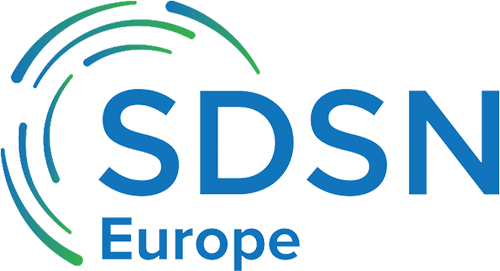
Angelo Riccaboni, School director, Co-Chair of the SDSN Europe, held the eighth lesson of the phase 2 of the Siena International School on Sustainable Development about “The Grammar of Sustainability, the alignment of agrifood companies to SDGs”. Jos Delbeke, EIB Climate Chair, held the ninth lesson of phase 2 of the Siena International School on Sustainable Development about “Climate transition as a driver for change”. Here are some of the key points to remember:
- Science is unanimous in signalling that human-caused global warming is unprecedented and alarming, affecting all regions.
- The commonly agreed-upon target of a 1.5° reduction by the end of the century is unlikely to be achieved under the current trends, policies and behaviours.
- Nonetheless, the pledges to carbon neutrality are explicit. It is also rational and reasonable to set differentiated targets in terms of time (mid-century vs. 2060/2070 commitments).
- South Africa is a good example of decarbonisation pathways. As a highly coal-dependent country, South Africa has initiated a detailed plan and implementation strategy to significantly reduce coal use, with specific targets and collaborations (e.g. collaboration with Financial Institutions and Private sectors)
- The global responsibilities towards decarbonisation are common but differentiated, because of the different levels of industrialization, as well as the diverse productive and physical features of each country.
- Data shows, for instance, that the overall top emitters are China (27%), the US (11%), India (6.5%), and the EU (6%) followed by Indonesia, Russia, and Brazil. However, according to the list of countries by carbon dioxide emissions per capita, India and China are at a lower level in terms of emissions while Canada, the US, Russia, Iran, and Germany are among the top emitters. Similarly, when historical emissions are taken into account, the EU and the US are placed on top, with India placed at the lower level.
- Europe has adopted a multilateral approach, envisioning the EU as a laboratory of a low carbon economy and low carbon policy, acknowledging that two-thirds of the emissions limit has already been met and implementing a variety of strategies, policies, instruments, and actions.
- The EU’s decarbonisation targets are a 55% reduction by 2030 and carbon neutrality in 2050 based on 1990. Also, the EU has recently decided to have an annual reduction of 2.7% of emissions. In addition to the resources of the EU Green Deal, to ensure the transition investments should be 350 billion per year till 2030 in the sector of construction, energy, transport, and industry, including electrification of housing, aviation, and car sectors.
- Decoupling economic growth from the use of natural resources, particularly the abandonment of fossil fuels, is possible in the EU, taking into account emerging trends in nature-based carbon absorption practices to offset carbon emissions that cannot be eliminated.
- EU Climate policies are articulated in different instruments: market-based approaches such as the ETS, and mandatory and voluntary standards and benchmarks.
- The EU has implemented Emissions Trading Systems (ETS) for industry, energy, and aviation, which are proving to be a useful, effective, and innovative market-based mechanism. It is based on a cap on carbon emission set at the EU level, a carbon price (currently fluctuating between 60 and 90 euros per/ton CO2) and certificates for emissions bought by companies. The EU also plans to expand the ETS to include maritime transportation, heating, and international aviation. Companies have a significant incentive to decarbonise, considering the current high price of CO2 emission certificates. By 2030, the ETS is expected to reduce emissions by 61% while non-ETS sectors, such as consumers, are expected to cut emissions by 40%.
- In addition, the EU has promoted the border carbon adjustment mechanism, which acts as a border tariff on imported products (e.g. aluminium) that do not prove to be carbon-free. It is a sophisticated mechanism that allows for externalities to be considered while also allowing for technicalities in various sectors to make it complex to fully implement.
- EU is also pioneering in the regulations and legislations, through acts such as the EU taxonomy for sustainable activities, Climate Delegated Act, Sustainable Financial Disclosure Regulation, and Corporate Social Reporting Directives pushing companies to increase their commitment to decarbonisation. In addition, the EU has also proposed ambitious sectoral targets such as the renovation of 3% of public buildings each year.
- Significantly, the EU has adopted a no-one-size-fits-all decarbonisation strategy. Through the Effort Sharing Regulation, the EU allows for a recalculation of efforts among EU countries based on efficiency considerations, specific characteristics of each State, and its level of economic growth, and asks more of those States that are better positioned to address the transition costs
- The Russia-Ukraine crisis will accelerate the climate-neutral transition by the EU, for instance, with an energy mix that will include a rapid shift from gas to higher percentages of renewable energy while avoiding the risk of protectionism and maintaining a multilateral, proactive policy-oriented approach. With Germany holding the presidency of the G7, the idea of the creation of “carbon clubs” for decarbonisation in a sectorial, flexible manner should also be monitored.




